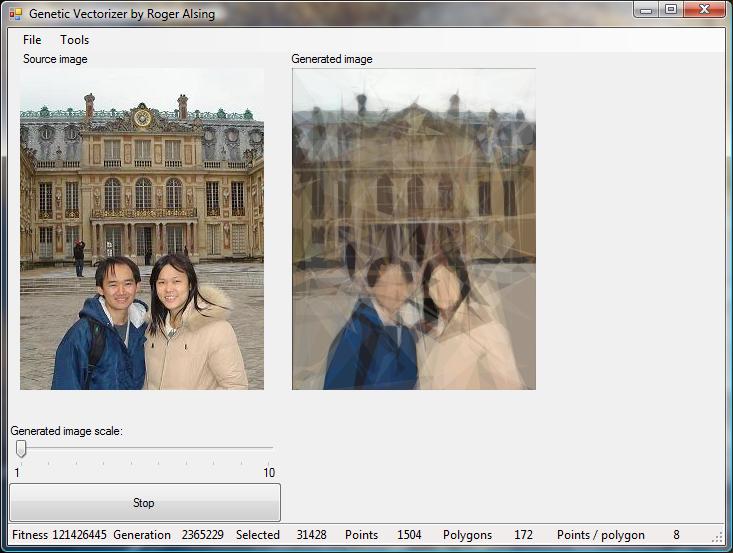Okay, this is really nothing more than a cool toy, but it is still really cool! This is made using a simple application by Roger Alsing that starts with a blank slate and then adds some random polygons to it. The result is compared to the source image and if it looks closer then it is kept, otherwise it is discarded. The kept result is then further mutated and compared again and so forth. After a while, it gets pretty close to the original source.
There was a bit of skeptism about this when this was first spread over the Internet, but the creator has since made his source code and binaries available via Google, so go download it and play with it if you’re so inclined. The author originally used the program to generate an image of the Mona Lisa and he managed to get a very good representation after about 900,000 generations and using 50 polygons. Unfortunately I happened to pick a rather more complex photo, and this is what I got after having the computer working at it whole night. As you can see, it’s up to 2.3 million generations and 172 polygons.
The author calls this an example of genetic programming, but I’m not sure if the term is appropriate because usually these things involve a population pool of multiple competitors in each generation while there is only ever one instance in each generation in this program. People have been using this as an example to implement their own versions that do involve competition between multiple mutations though, and it will be interesting to see if they are more efficient at arriving at the source image.
